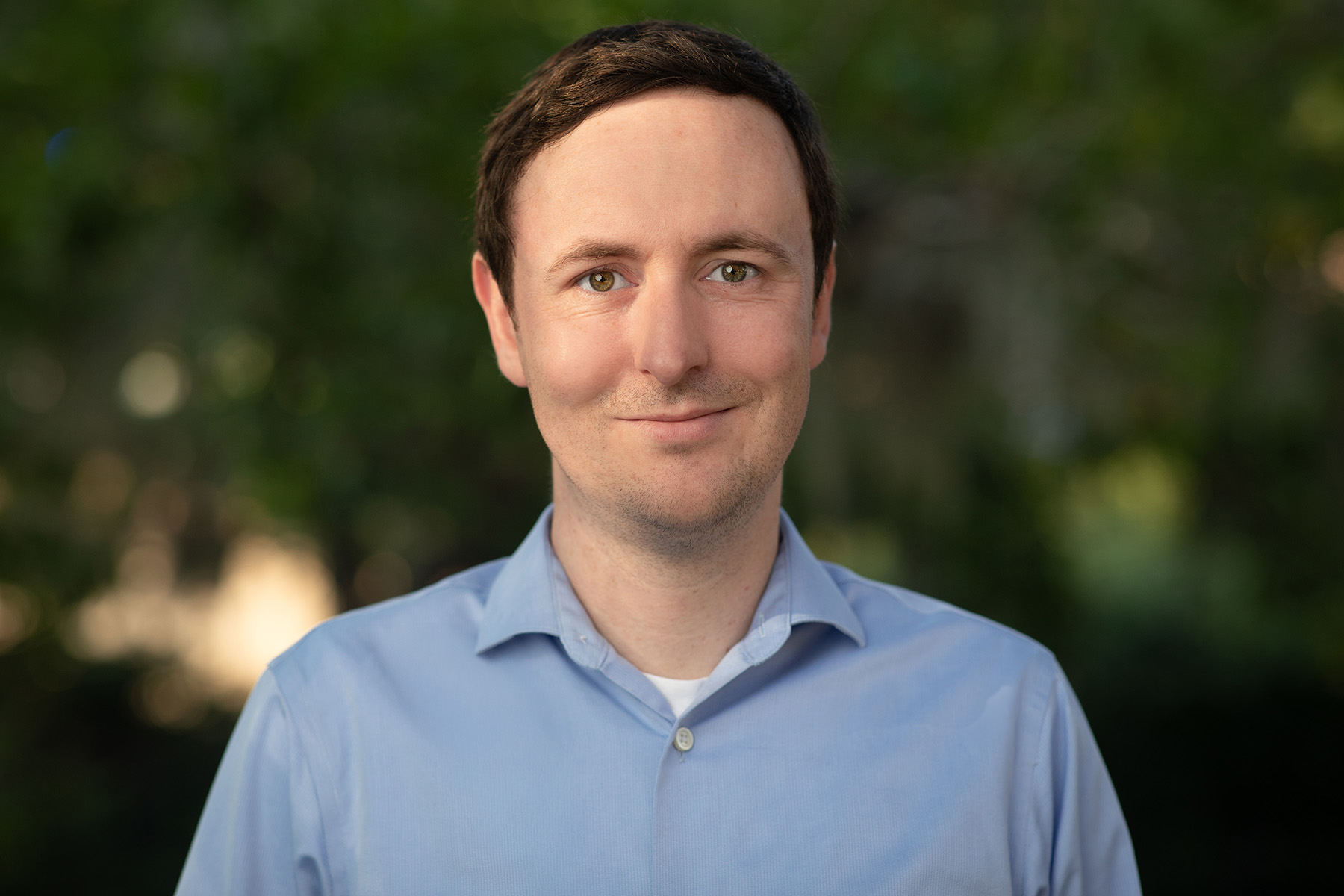
A Florida State University researcher has received a multi-million-dollar grant to examine the way cells communicate, which may lead to improved strategies for diagnosing and treating conditions such as diabetes and cancer.
Assistant Professor of Chemistry and Biochemistry Robert Lazenby has earned the Maximizing Investigators' Research Award, or MIRA, from the National Institute of General Medical Sciences, part of the National Institutes of Health (NIH). For the next five years, the $2,000,695 award will comprehensively fund the Lazenby Laboratory's development of new nanoscale imaging technologies capable of measuring molecules that comprise living cells, allowing researchers to analyze life's building blocks at an unprecedented scale.
"This grant is huge news for our lab because it provides long-term, stable support," Lazenby said. "It gives us the opportunity and freedom to pursue a range of ideas in multiple projects related to single-cell analysis - studying one cell at a time - as well as the resources to follow new discoveries as they emerge."
"This grant is huge news for our lab because it provides long-term, stable support. It gives us the opportunity and freedom to pursue a range of ideas in multiple projects related to single-cell analysis - studying one cell at a time - as well as the resources to follow new discoveries as they emerge."
- Robert Lazenby, assistant professor of Chemistry and Biochemistry
MIRA falls under the NIH's broader R35 grant program, and the award is unique for its "program versus project" approach, supporting broader research activities rather than individual projects with predetermined goals. In doing so, NIH aims to increase the efficiency of its funding by providing investigators with greater stability and flexibility, enhancing scientific productivity and opportunities for important discoveries.
"This opportunity strengthens the foundation of my lab's research program and accelerates our ability to develop tools that could improve understanding of disease and inform future therapies," Lazenby said. "I am delighted that it affords my students the freedom to pursue new ideas without resource constraints."
The Lazenby Laboratory will use MIRA's support to develop new tools that measure molecules within living cells with increasing accuracy. Each of the roughly 30 to 40 trillion cells in the human body contains many molecules, such as serotonin, dopamine and glucose, that drive its functions. Lazenby studies the way these small molecules behave during cell communication, which affects basic functions such as growth, tissue repair and immune responses. A breakdown in communication among cells is associated with a wide range of diseases, including Alzheimer's, Parkinson's and cancer.
By studying cell communication at such a small level, the Lazenby Laboratory's research is critical to the development of new diagnostics and treatment options that can eventually improve health care outcomes.
"Long term, our development of advanced nanoscale imaging tools and new analytical methods could lead to a means of testing the efficacy of medical treatments without relying on animal or human studies," Lazenby said. "Our approach could also improve how we study diseases that are difficult to study with current imaging techniques, potentially leading to better diagnostic strategies across many health conditions from cancer to diabetes."
In the broadest sense, the Lazenby Laboratory focuses on electroanalytical chemistry, developing tools to study how cells communicate with and amongst each other through the release and detection of chemical signals. The tools Lazenby is set to build with MIRA's support can detect multiple molecules at once, including neurotransmitters - the chemicals that allow nerve cells to talk to one another. This may lead to a better understanding of brain and neuropsychiatric disorders, such as epilepsy and depression.
"Dr. Lazenby is an electroanalytical expert dedicated to the development of novel imaging modalities and sensing methodologies, enabling the study of complex biological systems that are beyond the reach of current techniques," said Wei Yang, Department of Chemistry and Biochemistry chair. "The research program he builds will not only further enhance the department's strength in analytical chemistry, but it will also enhance the university's reinvigorated emphasis on molecular bio-design and drug discovery."
For more about Lazenby's work and research conducted in the Department of Chemistry and Biochemistry, visit chem.fsu.edu.






